How to make your home look bigger – without getting the construction crew in
The expert advised methods for making small spaces seem larger
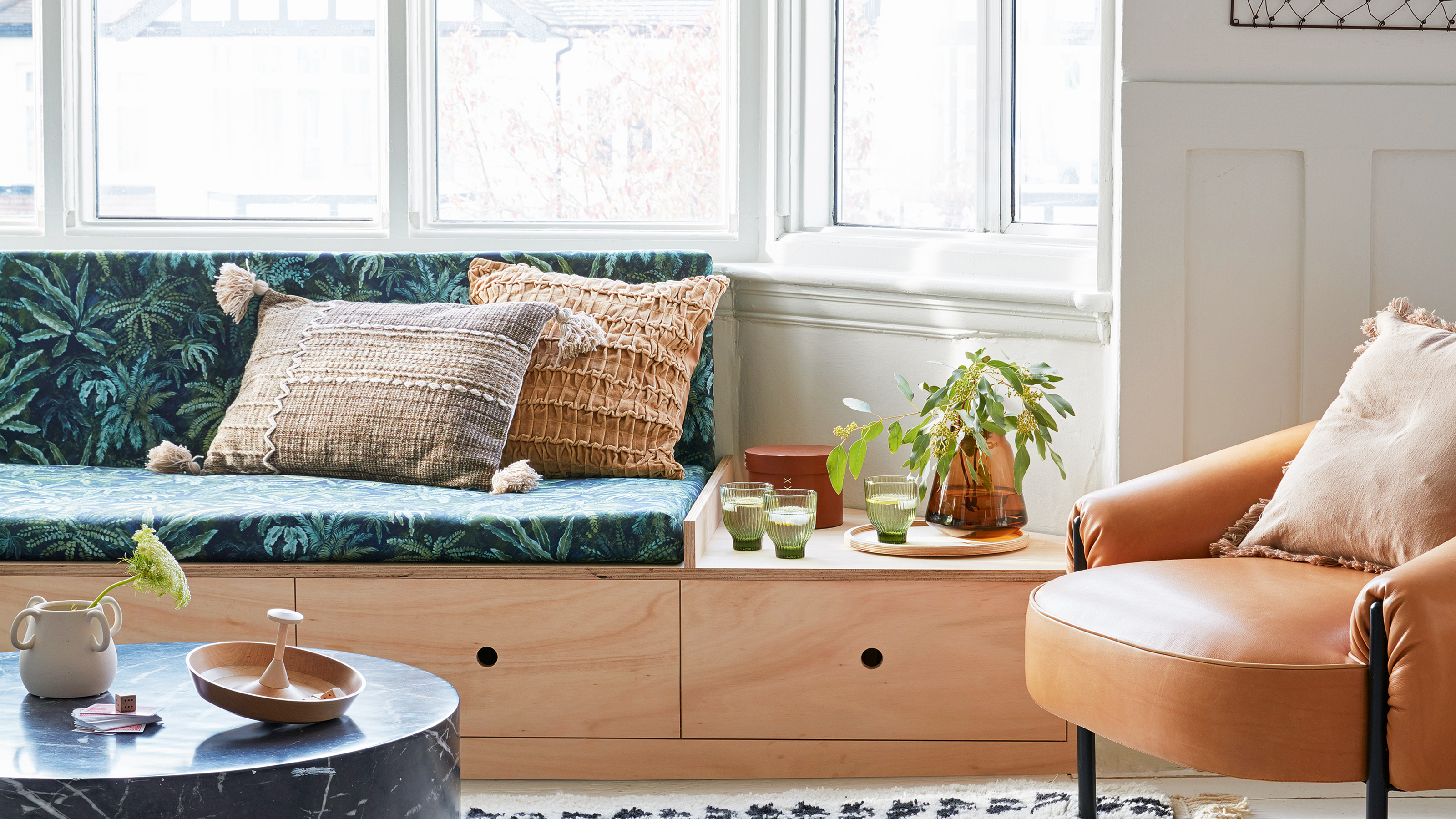

Katie Sims
If you live in a house on the smaller side of things, then you've probably wondered how to make your home look bigger – without getting structural changes involved. Similarly, you may be working with a larger space but for some reason the rooms feel smaller than their footprint. Luckily, there are so many ways to visually increase the size of your space so it feels bigger and roomier.
In a small home you may have considered extending, but if that's not possible or looking at examples like kitchen extension costs put you off, then breathe easy, because we've got a wide range of ways to make your home feel larger without any construction coming into play and you won't have to redo your budget to make them work. That's what we call a win-win!
How to make your home look bigger
'If your home is tight on space, there are several easy ways to make your space more functional, without having to make any major changes,' says Matthew Currington, technical director, The Lighting Superstore.
We've asked the experts to tell us all so that we can help you transform tight spaces into gloriously spacious-feeling areas. Whether you're working with small kitchens, snug bedrooms or the whole house is looking a bit cramped, these tips will help with how to make your home look bigger whether you try one, or a combination of ideas.
1. Declutter and organise
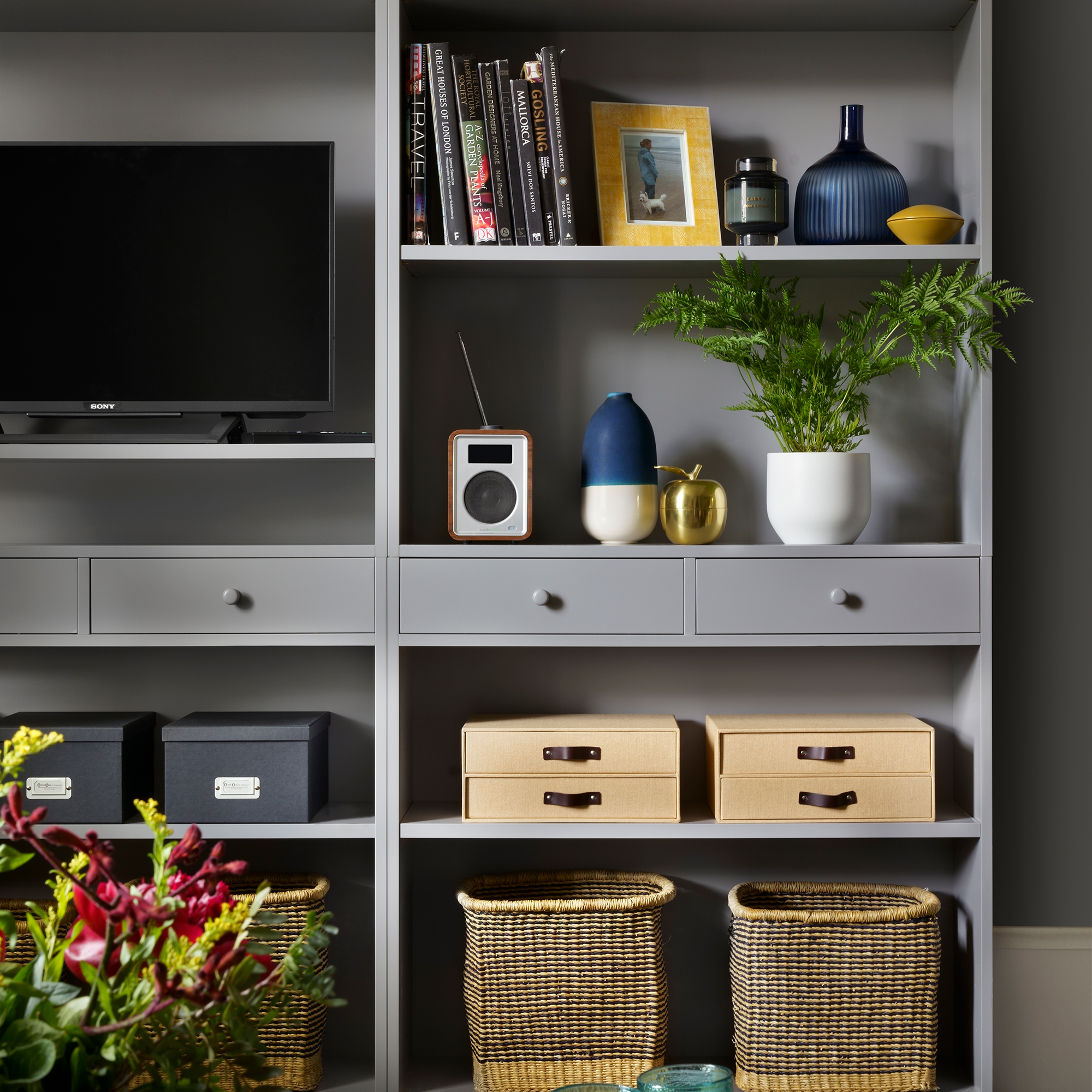
When it comes to how to make a home look bigger everything begins with a good declutter. 'Our homes are essential to our self-care and relaxing, so creating a clutter free, calming space is a must, even when space is limited,' agrees Rikke Blaeside, design and range manager at JYSK.
Whether you're starting with quick 10 minute clear-out a or you're going full-out with an ultimate declutter you'll of course have to kick things off by getting rid of anything you don't need - if you haven't used it in the last year, you're probably not going to use it in the next either. Equally, anything that is out on display that isn't adding value to the space can go too.
Keep display items to a minimum; it's better to have fewer, larger statement pieces placed carefully around the home, than lots of little knick-knacks springing up everywhere, which is a sure way to make your rooms feel overcrowded.
Get the Ideal Home Newsletter
Sign up to our newsletter for style and decor inspiration, house makeovers, project advice and more.
2. Choose a light colour scheme
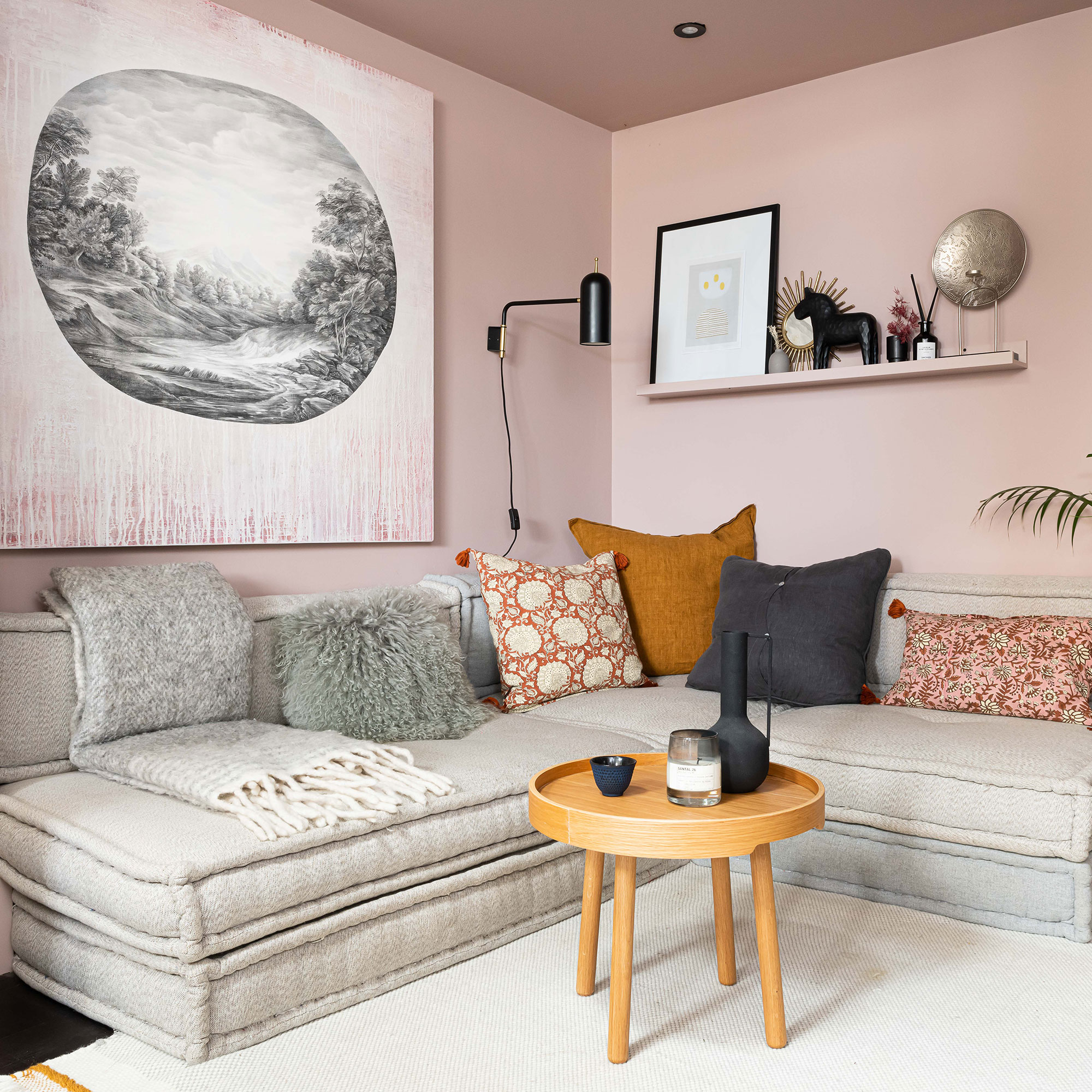
'When wanting to make a space feel bigger the colour choice is incredibly important,' stresses William Durrant, owner, Herringbone Kitchens. 'Light, pastel, taupe or neutral colours work wonders when creating the illusion of a bigger space.'
Light, neutral colours on the walls will maintain an airy feeling in the room, whereas deeper and darker shades will have the opposite effect as they don't reflect light. This is especially important if your space is lacking in natural light. 'Choose a light colour such as white to reflect the little light you have and widen up your room upwards,' suggests Rikke from JYSK.
And don't make the mistake of thinking that lighter paint on the walls is a boring style choice; there are plenty of beige living room ideas that will create an enviable front room, for example.
'Soft, pale colours like light grey, creamy white, or pastel shades used on the walls and painted furniture can reflect light and create a sense of openness,' says Kate Palmer, creative director, The Painted Furniture Company. 'These hues can also provide a calm and tranquil atmosphere, making the space feel more inviting.'
'In addition, it's generally advisable to avoid using multiple contrasting colours or busy patterns in a small space,' advises Kate. 'These can create a visually cluttered and disjointed look, making the space feel overwhelming and lacking cohesion.'
Try colour drenching, or using similar shades throughout your scheme. 'For your kitchen for example, consider using the same tones on the walls as well as the cabinets to create a lovely warm space that appears larger than it is,' suggests William.
3. Pick patterns carefully
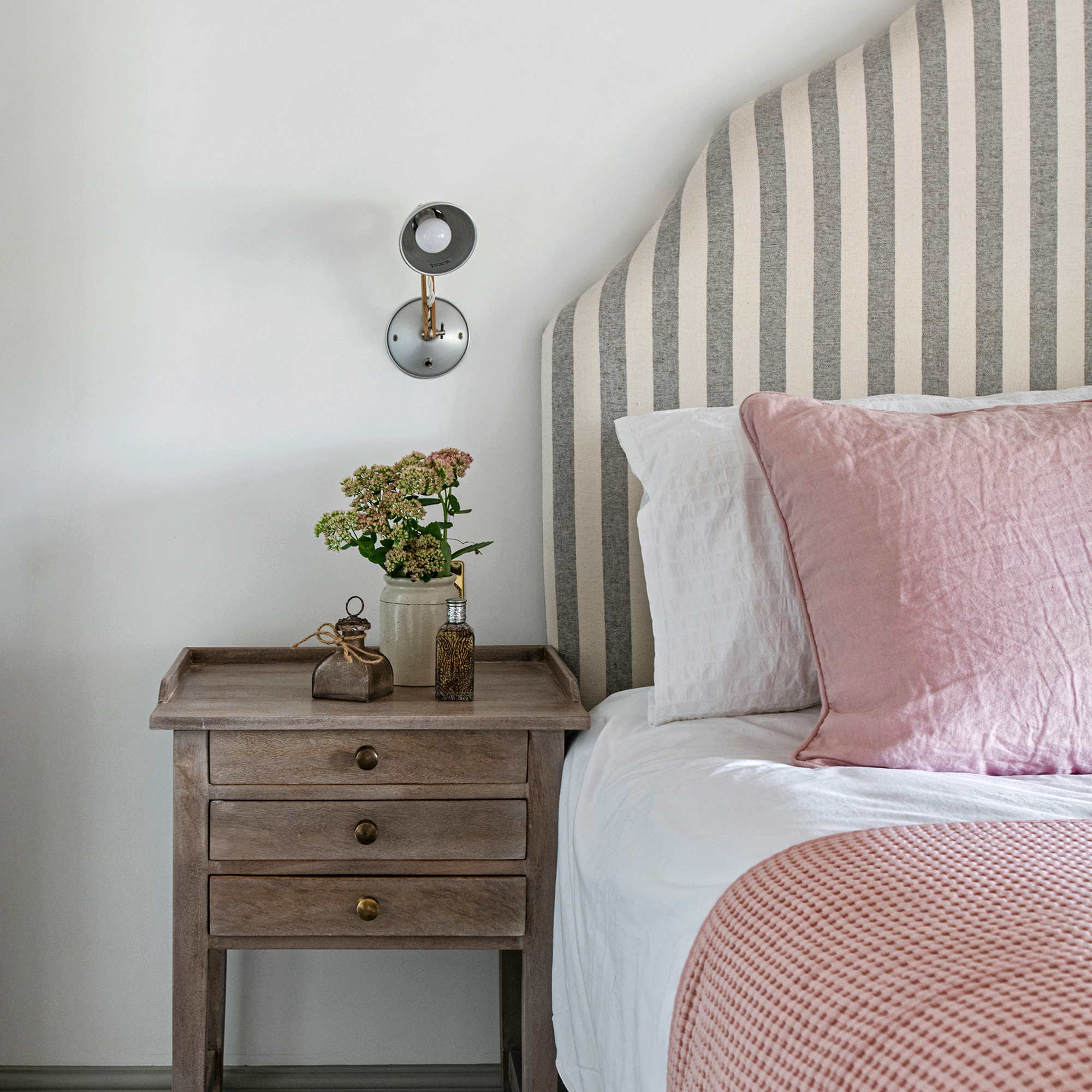
Just like colours, the patterns you use in a room can impact how to make a home look bigger or smaller than it actually is.
'Horizontal stripes can make a narrow room feel wider, so upholstered sofas can stretch out the feel of a room or if you have a space you want to make feel taller, use vertical stripes – ceiling to floor curtains can help enormously with this,' says textile designer Tori Murphy.
With ant type of pattern you also need to consider the scale. Smaller spaces work best with smaller repeats, however you can use larger patterns in small spaces if done so carefully. 'For example, small, quieter patterns can complement a cushion with a bold pattern which you can use more sparingly,' suggests interior designer Ann Marie Cousins.
When choosing the colourways of your pattern also consider how much 'traffic' they're adding to the eyeline. 'I would suggest avoiding high-contrast colour combinations, such as black and white or strong complementary colours,' advises Debbie Leigh, design manager at ILIV, 'as they can create a visually busy environment that may feel cluttered in a small space.'
4. Storage is key
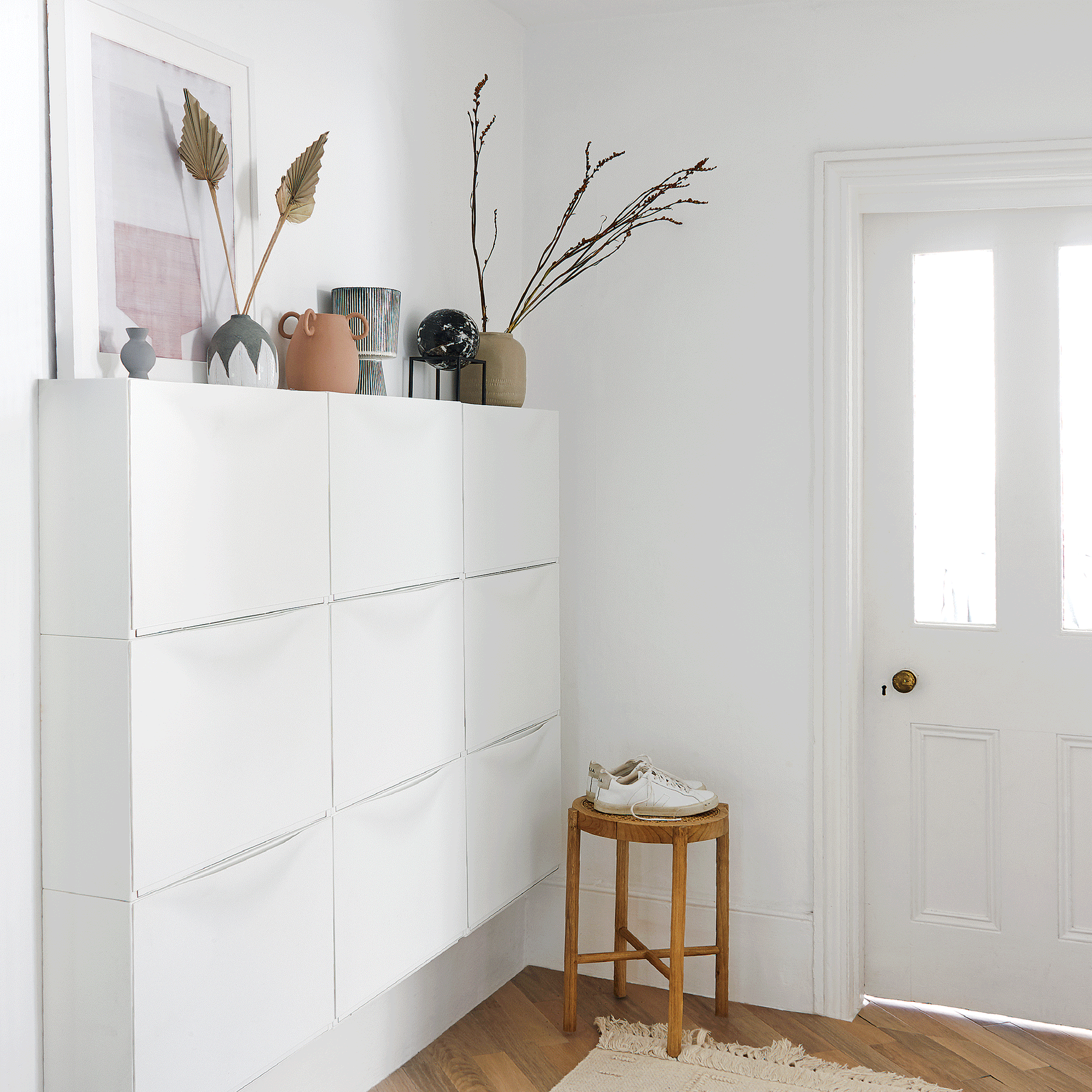
When learning how to make a home look bigger, storage is your best friend. In every room, maximise storage possibilities by utilising your furniture and fixtures. For example, kitchen islands can offer space to store larger appliances that don't need to be out on the worktop all the time, as well as air fyers and cooking pots.
'Factor in plenty of storage to keep your home clear of clutter as clear surfaces and floors make a home feel bigger,' advises Sallie King, founder of Urbansize. 'Utilise clever hidden storage, such as above kitchen cabinets, underneath the stairs, built-in seating and the back of the door.'
'In narrow areas such as hallways opt for wall hung furniture and shoe storage to keep the floor clear of clutter to make the space feel larger,' Sallie suggests. 'In bedrooms, opt for wall hung bedside cabinets to give clear sight lines around the bed.'
5. Use multipurpose furniture
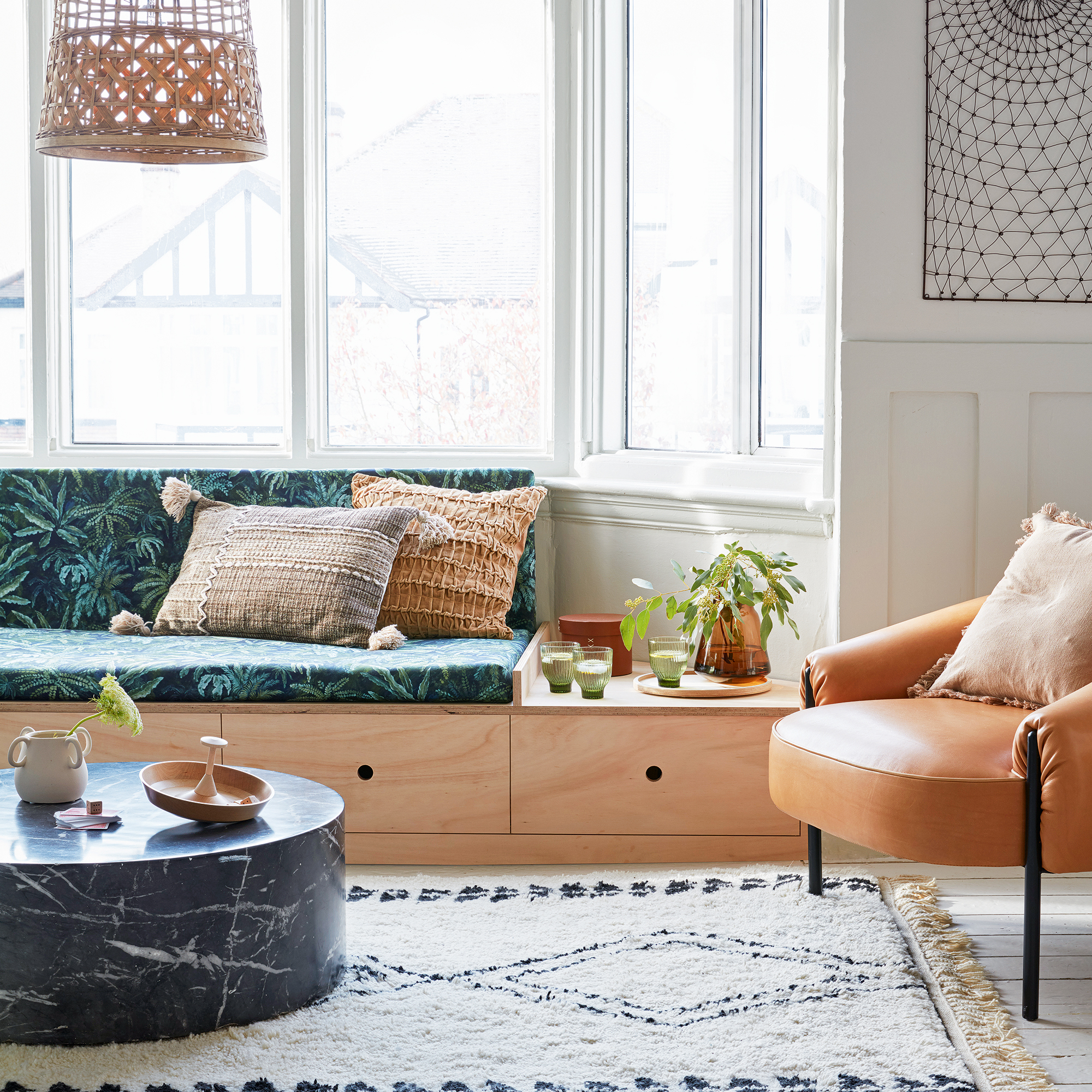
Knock two birds out with one stone and choose furniture that will help with how to make a home look bigger by moonlighting as secret storage areas.
'Choose pieces that serve multiple purposes, such as an island with built-in storage or a dining table with hidden storage compartments,' advises James Bernard, director of Plus Rooms.
'A stylish stool can be used as both seating at a dressing table as well as additional storage for hair dryers and beauty utensils, while opting for a bed with drawers built into the frame can provide a wealth of additional storage that is easily accessible for items such as extra bedding and blankets,' adds Rikke from JYSK.
6. Go high with shelving
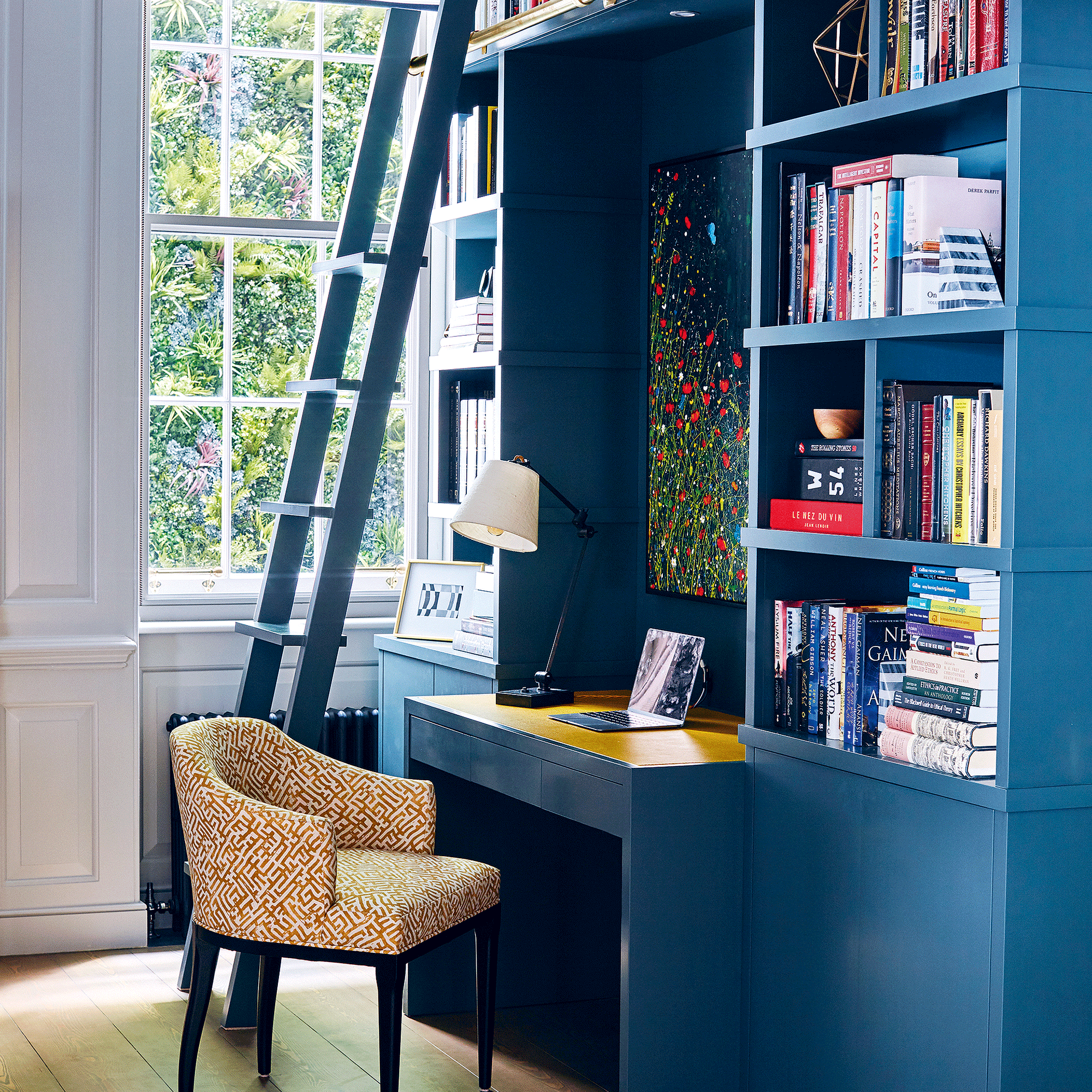
Smaller spaces benefit from shelves sitting higher up the wall than usual. 'This gives the impression that the room is taller, and therefore bigger than it really is,' explains Lee Trethewey, interiors expert, Sustainable Furniture. 'The lower the shelving, the more compact any room feels.'
'Avoid wall cabinets that can close in the space. Instead opt for open shelving,' advises Chris Spink, founder of Hush Kitchens. Placing photos and framed pieces of artwork on these shelves will naturally draw the eye upwards and add height to the room. The same applies if you're hanging any decor on the wall; place it a few inches higher than planned and you'll be surprised at the difference it makes.
However, you don't have to take it all the way to the ceiling. 'Don’t go too high, it isn’t supposed to be really obvious, and you don’t want to get a sore neck from looking up all the time,' says Chris Bawden, lighting expert, Simple Lighting.
7. Let furniture breath

Thinking about how your furniture sits in a space can affect how to make a home seem bigger. This may involve choosing items elevated off the floor, or simply moving existing pieces.
'Maximising the amount of floor space that can be seen in the room will trick the eye into thinking it is larger than it is, so opt for furniture on legs,' suggests Sallie from Urbansize. 'Taller legs on furniture create the illusion of light and space and make the room look bigger.'
'Not every piece needs to be elevated but adding legs to your living room sofa would be most effective for bringing in the illusion of space,' continues Patricia Gibbons from the design team at sofa.com. 'There is something about being able to see more floor which creates the feel of spaciousness especially when you aren’t spoiled for it.'
This is just as applicable in spaces like kitchens and bathrooms as it is rooms you might expect like lounges. 'If an island is on your wish-list (and there’s room) choose a farmhouse style which has legs so you can see the floor underneath giving a feel of space,' explains Chris from Hush Kitchens.
Spacing out furniture is just important as the space underneath. 'Where you can, leave 10cm of breathing space around each side of your furniture,' adds Sallie. 'Don't always be tempted to push everything as close to the wall as possible as it can create a cluttered busy look.'
8. Select the right sofa
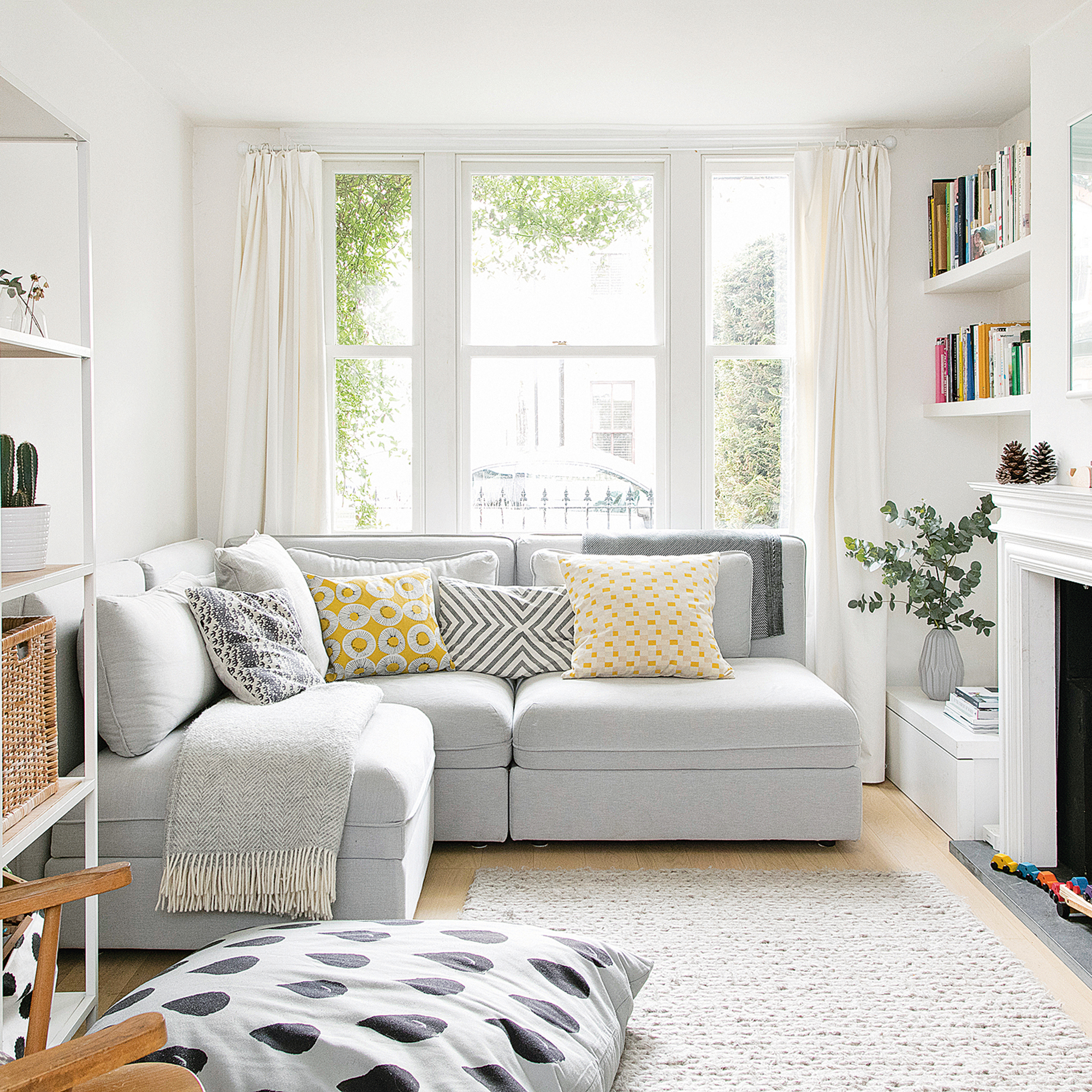
Choosing the best sofa with legs isn't the only way this piece of furniture can help with how to make a home look bigger.
'It’s often said small space, smaller sofa but in reality opting for a larger sofa (within reason of course) in a small space creates the illusion that the space is much bigger. It’s more about the sofa design, shape and fabric choice which will have an effect on the room to sofa ratio,' explains Neale Whitaker, brand ambassador for King Living.
'When choosing a sofa for a small space, always work towards the less is more, no frills approach - consider choosing a shape with no arms which tends to open up a space, also providing less rigid seating options creating a more welcoming feel within the space,' Neale continues. 'In terms of design and fabric colours, you want your sofa to blend in as opposed to make a statement.'
'It’s worth noting that neutral doesn’t have to mean plain,' adds Gisela Lancaster, head of buying at Sofology. 'Opting for styles with beautiful details, such as curves, buttons or fluting, will add character to a small space without overpowering your scheme.'
Finally, measurements are everything. 'Make sure to accurately measure the room so you can choose a size that will not only look great, but will leave enough space for you to move around,' reminds Gisela. 'Similarly, ensure you take into account the height of the sofa and assess how it will fit around shelving and other furniture you may have.'
9. Light with care
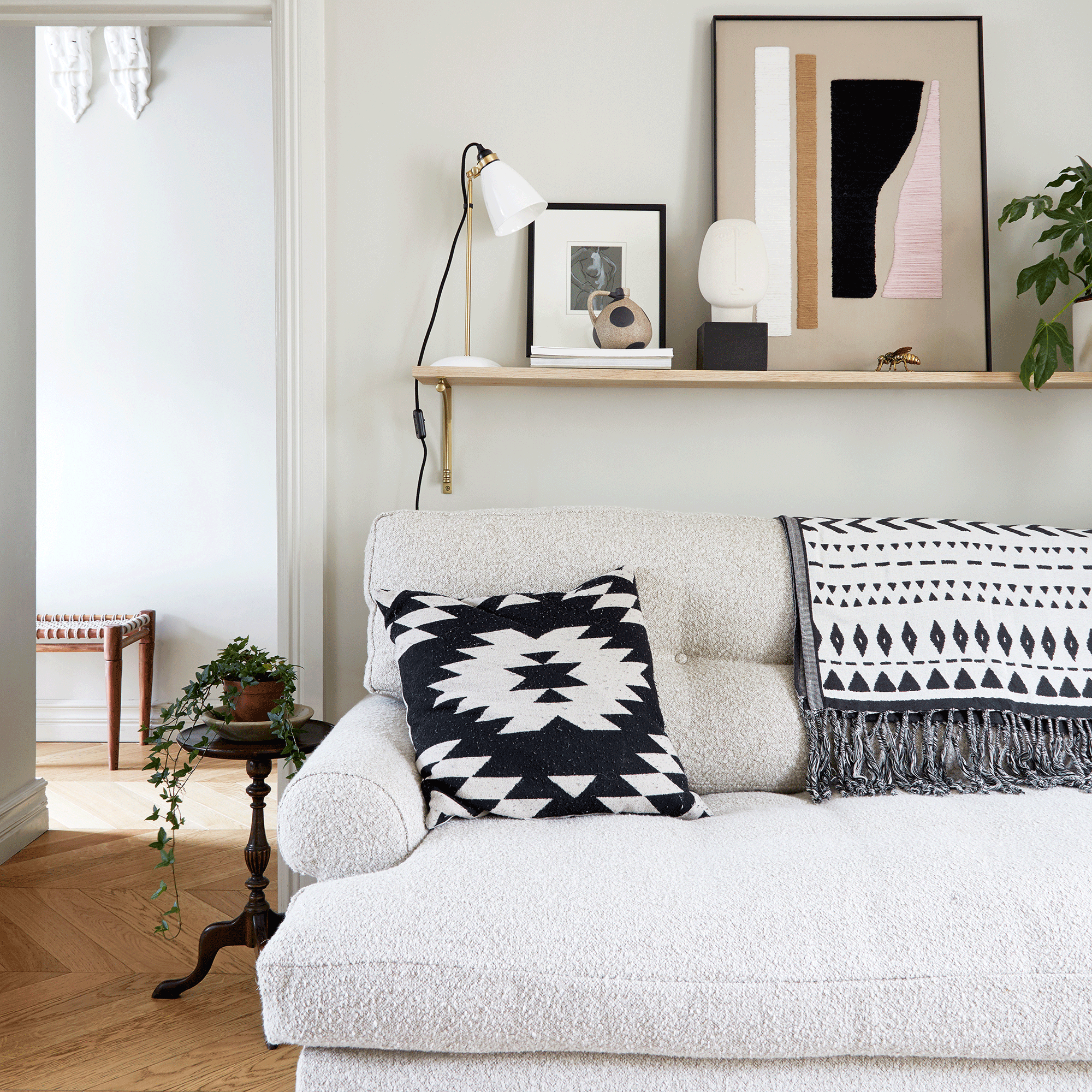
It's probably no surprise that lighting will make a huge difference to how big or small your house feels. 'Good lighting can help a space to feel larger than it actually is. If you are not blessed with lots of natural light, ensure you have enough light sources to keep the room feeling bright and airy,' says Mara Rypacek Miller, managing director of Industville.
The hot new lighting trends for 2024 will give you plenty of inspiration, but it's just as much about how you position the fixtures as it is the fixtures themselves. 'Wall sconces with uplighting are a good choice, as they don’t take up any floor room,' says Chris from Simple Lighting. 'If you already have a floor lamp which can be angled, point it up rather than down. The same goes for table lamps.'
Ceiling lights can be tricky to navigate if you have low ceilings or a small room. Ideally, you don’t want anything that will dominate a cosy space, or anything you could walk into, so ditch the idea of a chandelier.
'Flush ceiling lights are a good choice as they take up less room and choosing clear or glass shades will keep the space feeling fresh and open,' advises Mara.
10. Get reflective
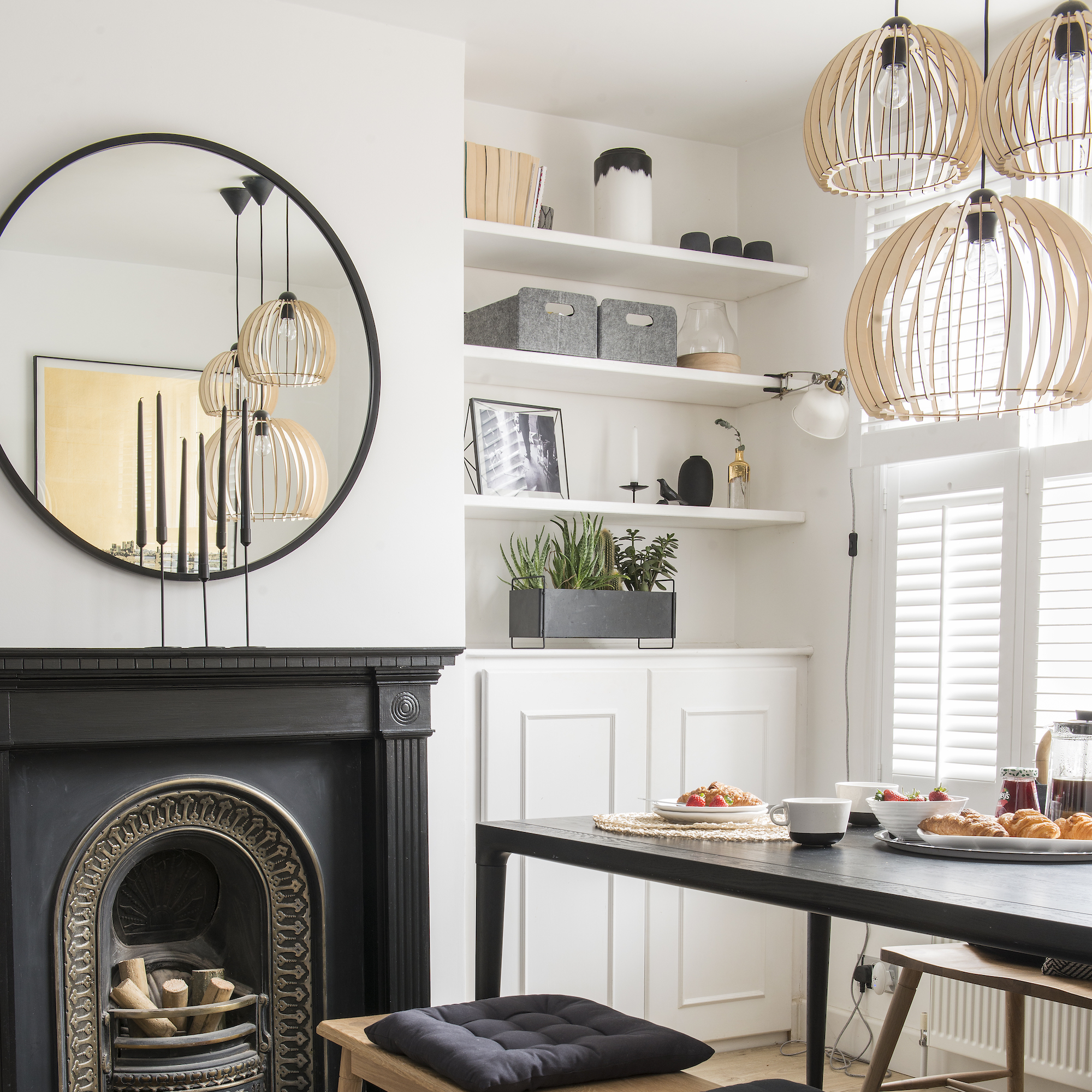
It's the oldest trick in the book and sometimes classics like these just can't be beaten. 'Brilliant for creating the illusion of more space, mirrors can be used virtually every room in the home to reflect the light and other reflective, glossy surfaces,' explains Helen Pett, design ambassador for Arteriors London. 'Light and colours bouncing off mirrors can create a real impact as they give the illusion of a larger space as well as brighten it.'
Think, however, about how you're placing your mirrors. 'Try the mirror at different angles, both vertically and horizontally, to see which fits and compliments your space better,' advises Rikke from JYSK.
'Consider propping your mirror onto a mantelpiece or shelf as an alternative to hanging it so the mirror hangs lower,' adds Amy Wilson, interior design expert, 247 Blinds & Curtains . 'Propping small mirrors onto shelves and windowsills helps extend the line of sight beyond the items placed around them and works particularly well if you pop something metallic in front.'
And it's not just mirrors themselves that can help. Antiqued glass splashbacks do the same thing, for example. Or, if in a room that's really tight for space look to options like mirrored radiators. 'They are a stylish space-saving option that allows you to heat a room whilst adding a design feature at the same time,' notes Nick Duggan, director of the Radiator Centre.
7. Opt for blinds over curtains
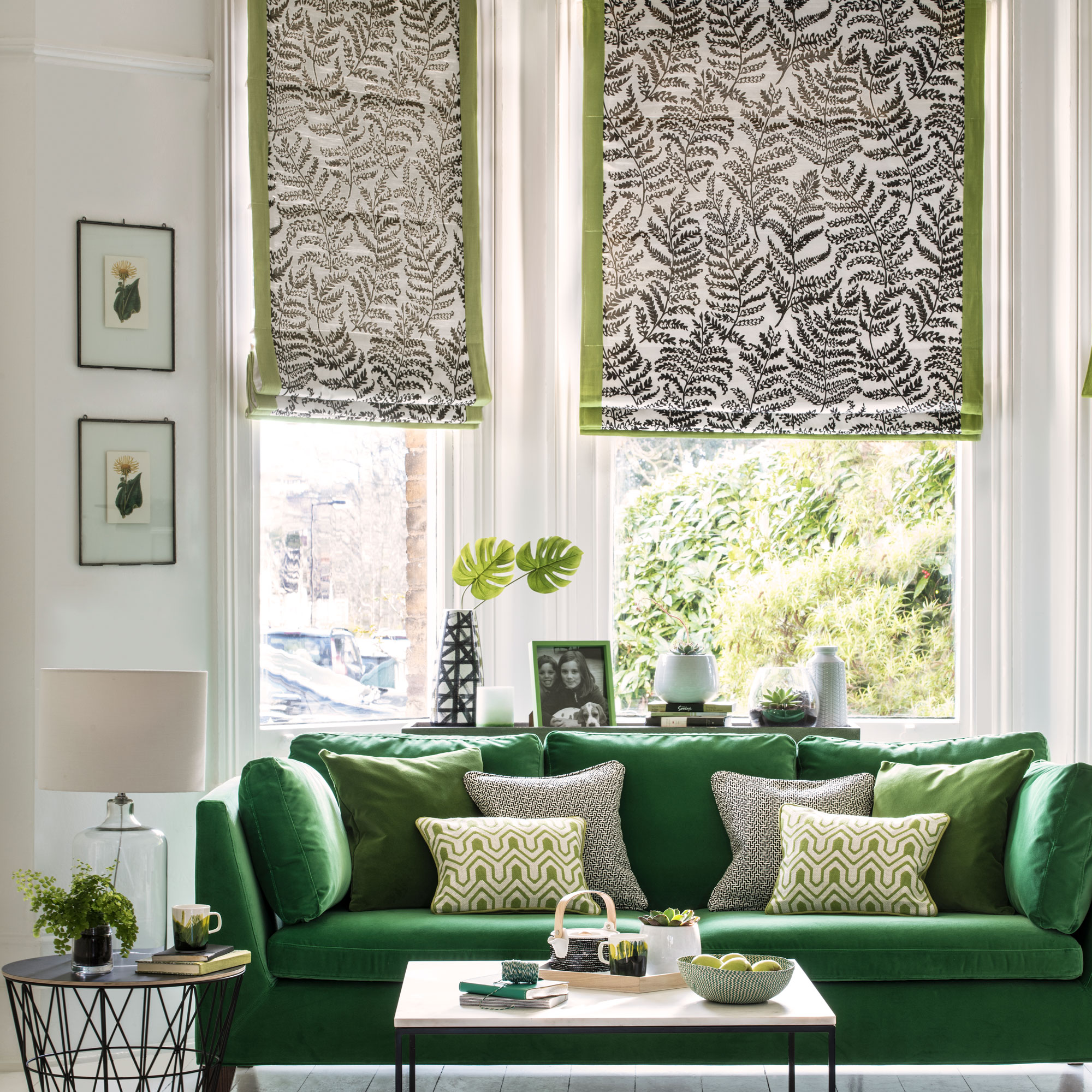
If the windows in your home are currently fixed with curtains, consider swapping these for blinds instead. Blinds are better at letting light from the window flood a room, and will instantly make a space feel brighter and more open. They take up less space than curtains as well.
'I would avoid heavy curtains, they can make windows look smaller and take up wall space, opt instead for roman blinds that maximise the amount of light coming into the room,' explains Sallie from Urbansize.
12. Be smart with flooring
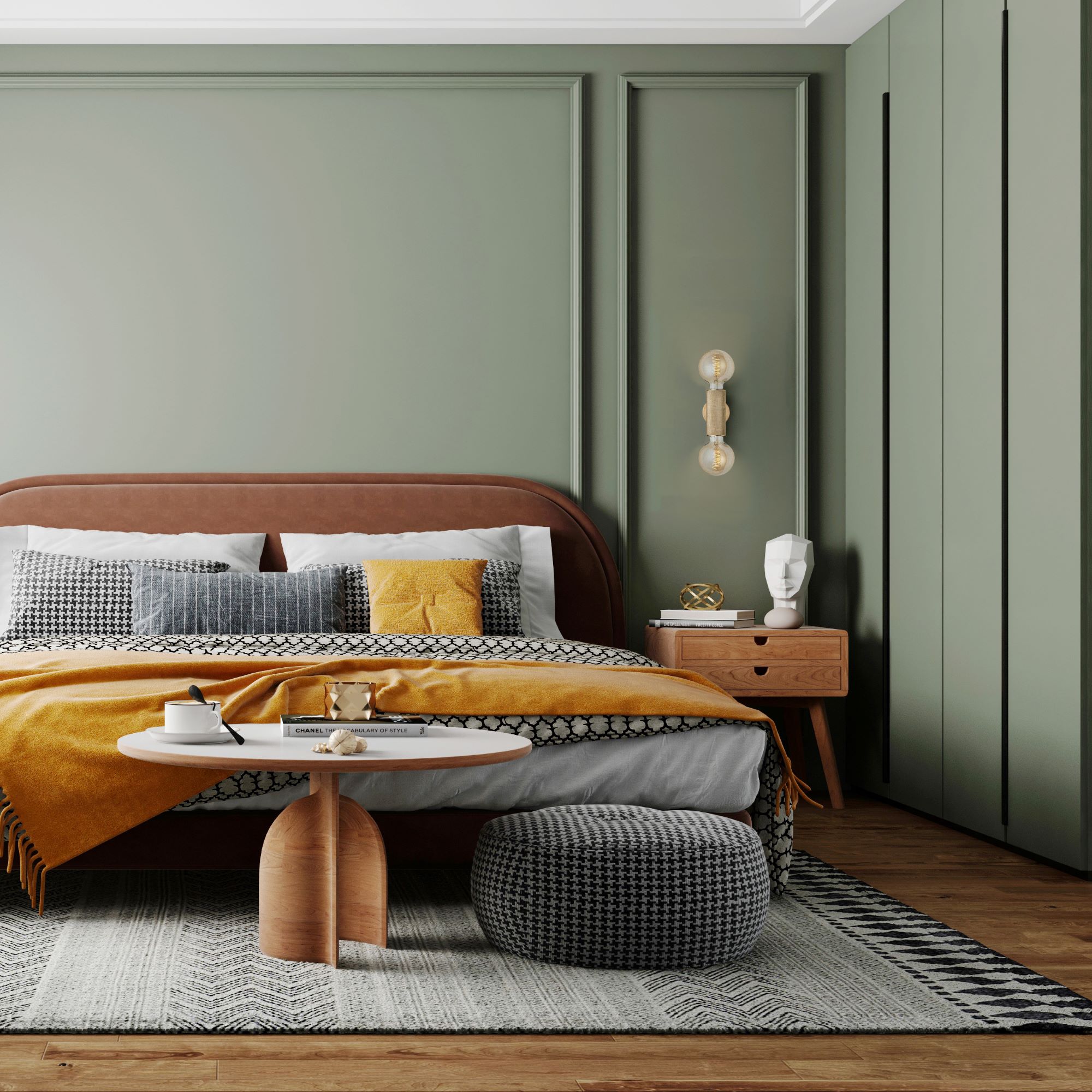
It may be surprising how much of an impact flooring can have on how large or small a room seems to be. 'You want to pick patterns that give the appearance they are extending the size of the floor,' advises Carolina Hansson, head of design, Luxury Flooring & Furnishings.
When it comes to tiles, you need think big. Unlike pattern repeats, you can really play with scale here. 'Using oversized tiles in a small area tricks the eye into thinking that the room is much bigger than it really is, so can help to create a sense of scale where it doesn't naturally exist,' explains Grazziella Wilson, head of creative at Ca’ Pietra. 'You’ll also have minimal grout lines which help to create a sleek and polished finish.'
FAQs
How do you make your home look bigger than it is?
When learning how to make your home look bigger without structural changes, minimalism is key; you want to avoid clutter as this quickly makes a room feel overcrowded. Streamline your decor, and stick to fewer pieces that can make a big statement on their own.
Look also at your colour schemes. Focus on light colours to brighten up each room. 'As a rule of thumb, lighter colours tend to make a space feel bigger, while darker colours – although good at helping to create a cosy feel – can give the effect of bringing the walls towards you, consequently making the room feel smaller,' explains Helen Shaw, director of marketing (International), Benjamin Moore.
'If you are working with a long narrow space, like a hallway or dining room you can use a darker colour at the end to draw the eye through the space and make the area feel more expansive. As well as using colour to create the impression of a larger space, your hallway connects to each room so the colour chosen should feel harmonious with the rest of the house.'
Go big on lighting fixtures too. 'Consider creating a layered approach by combining dimmable ceiling lights with floor lamps and wall sconces,' suggests Rebecca Snowden, Interior Style Advisor, Furniture And Choice. 'And let natural light in through sheer curtains or lightweight blinds.'
What makes a house look smaller?
The quantity of light is the biggest determiner of how big or small a room looks. To the human eye, more light equals more space, and less light equals less space. Anything that prevents light from flooding into a room, such as a heavy pair of curtains, will make it feel significantly smaller.
'Light is important in making your home feel big, and this doesn't stop at lighting,' says Lee from Sustainable Furniture. 'Opt for light shades on the walls instead of dark, as the darker the walls, the closer they feel to each other and therefore the smaller any room feels.'
Playing around with lighting and colour tones is crucial when learning how to make rooms feel bigger; you'll be surprised at the difference they make, and they're so much more cost-friendly than making structural changes too.
So whether you just want to start with a declutter and adding in some mirrors, or you're ready to revamp your space by changing up lighting and furniture, there are so many easy ways that will help with how to make your home look bigger. Easy work!

Thea Babington-Stitt is the Managing Editor for Ideal Home. Thea has been working across some of the UK’s leading interiors titles since 2016.
She started working on these magazines and websites after graduating from City University London with a Masters in Magazine Journalism. Before moving to Ideal Home, Thea was News and Features Editor at Homes & Gardens, LivingEtc and Country Homes & Interiors. In addition to her role at Ideal Home, Thea is studying for a diploma in interior design with The Interior Design Institute.
- Katie SimsContributor
-
 When to plant out annual flowering plants for vibrant, colourful garden borders – and give them the best start, according to experts
When to plant out annual flowering plants for vibrant, colourful garden borders – and give them the best start, according to expertsNot sure when to plant out annual flowering plants? We've got you covered...
By Kayleigh Dray
-
 I'm a kitchen decor editor and didn't like this tableware trend - until I saw H&M Home's designer-look plates
I'm a kitchen decor editor and didn't like this tableware trend - until I saw H&M Home's designer-look platesThey made it easy to justify a new crockery set
By Holly Cockburn
-
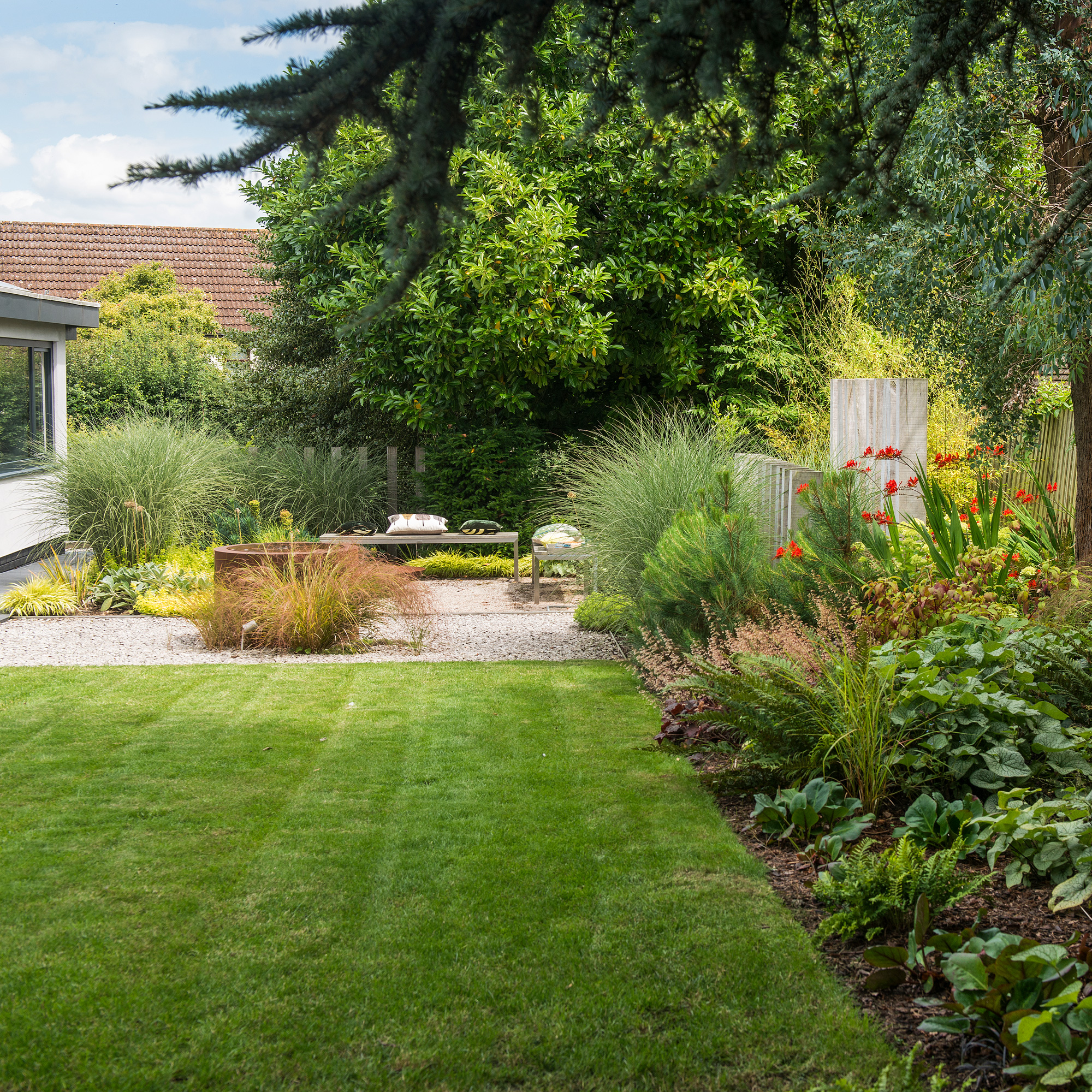 Garden expert reveals when to mow new turf and the 3 tell-tale signs your new lawn is ready to be cut
Garden expert reveals when to mow new turf and the 3 tell-tale signs your new lawn is ready to be cutIf you want a lush, green lawn, you mustn't mow new turf too soon
By Kezia Reynolds